resistance
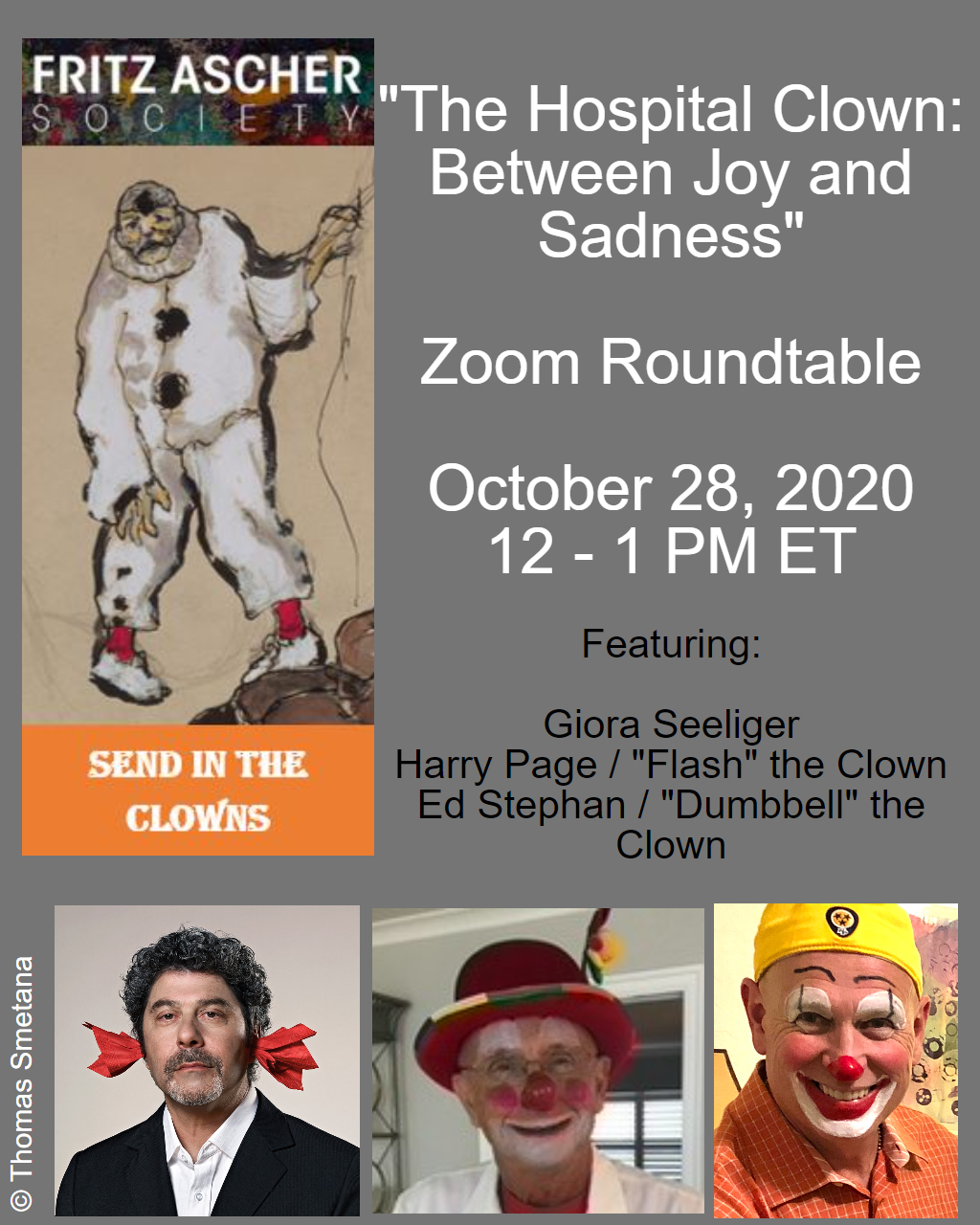
“The Hospital Clown: Between Joy and Sadness”
Roundtable featuring
Giora Seeliger, Harry Page, Ed Stephan
Moderated by Elizabeth Berkowitz
1014 - space for ideas
1014 5th Avenue, New York, New York, NY, United States
Watch the recording of this event HERE. Roundtable featuring Giora Seeliger Artistic Director and Founder of the Red Noses Clowndoctors International Harry Page “Flash” the Clown Ed Stephan “Dumbbell” the Clown Moderated by Elizabeth Berkowitz Art Historian and Digital Interpretation Manager, The Fritz Ascher Society in New York One of the more appealing aspects of the clown subject to artists like Fritz Ascher was the divide between a public persona committed to joy and happiness, and the pain or sadness that might lurk beneath the real, human surface. Hospital or healthcare clowns straddle this divide every day of their professional lives—working to bring happiness to child patients who are often in circumstances that might otherwise inspire grief or pain. This [...]
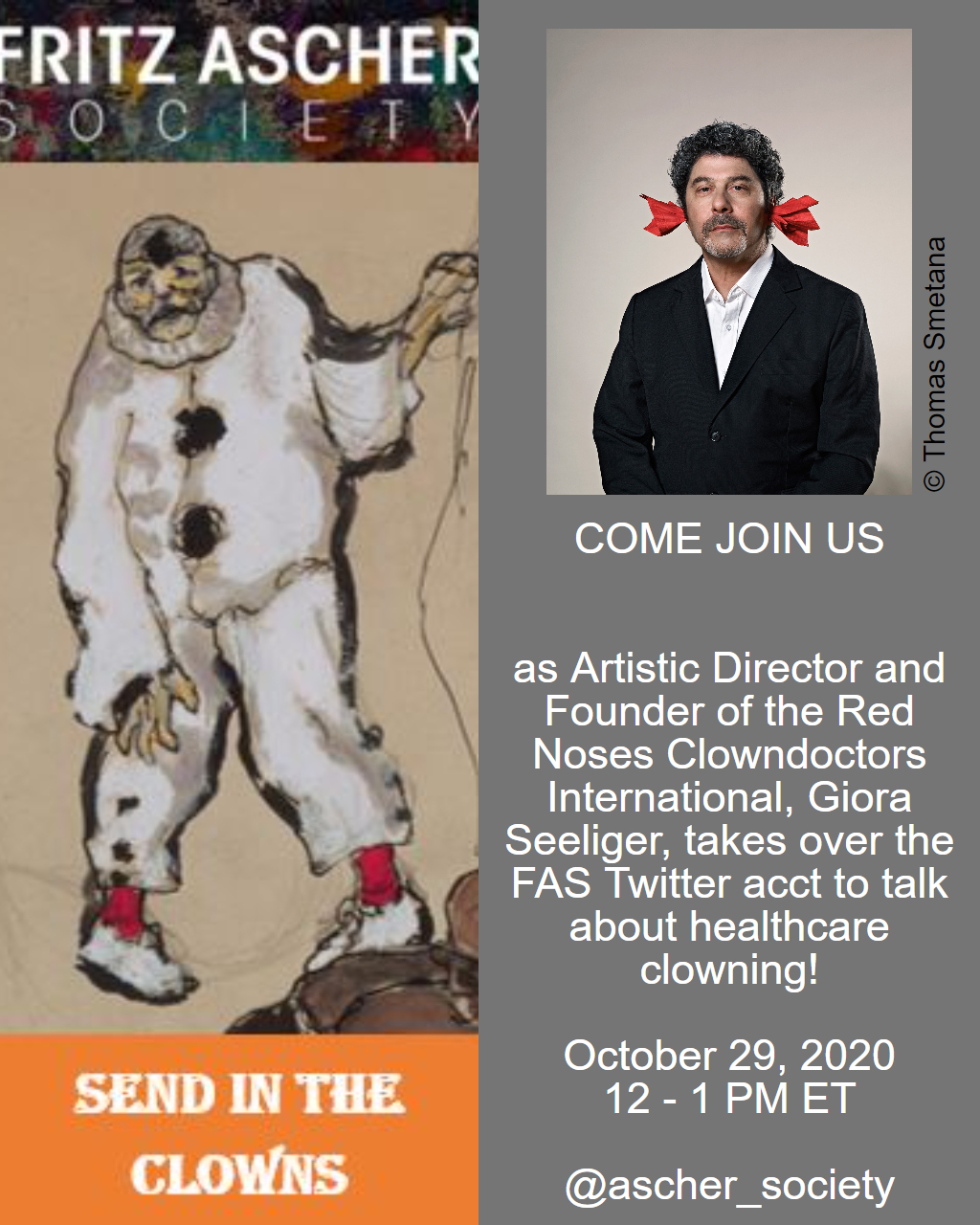
Twitterview @Ascher_Society
Giora Seeliger
“Ask A Healthcare Clown!”
1014 - space for ideas
1014 5th Avenue, New York, New York, NY, United States
Twitter @Ascher_Society Giora Seeliger, Artistic Director and Founder of Red Noses Clowndoctors International, takes over the FAS Twitter account to answer your burning questions about clowning, the role of a healthcare clown, and anything else that comes to mind! Submit your questions in advance by writing to info@fritzaschersociety.org Part of "Send in the Clowns," an interactive two-week digital initiative, which explores the clown as a figure between tragedy and comedy, between self- identification and stage--a character designed to (literally) mask the performer’s true feelings behind a facade of happiness. “Send in the Clowns” uses the prominence of the “clown” figure in Fritz Ascher’s work as a lens through which to explore the duality of the clown both historically and today. [...]

John Heartfield (1891-1968)
His Political Engagement and Private Life in London
Rosa von der Schulenburg, Berlin
1014 - space for ideas
1014 5th Avenue, New York, New York, NY, United States
WATCH THE RECORDING OF THIS EVENT HERE. Lecture featuring Rosa von der Schulenburg, Head of the Art Collection of the Academy of Arts in Berlin Moderated by Rachel Stern, Executive Director of the Fritz Ascher Society in New York John Heartfield (1891-1968) was a German visual artist who pioneered the use of art as a political weapon. This presentation starts with preliminary remarks about John Heartfield’s bequest in the Akademie der Künste in Berlin and shows how it is accessible nowadays. A short introduction of how all began follows, showing the background of the birth of Heartfield’s political photo-montages (World War I, Dada, Communist Party, Willi Münzenberg’s Die Arbeiter-Illustrierte-Zeitung in short AIZ), glances at Heartfield’s first exile stage in Prague and then focuses on [...]
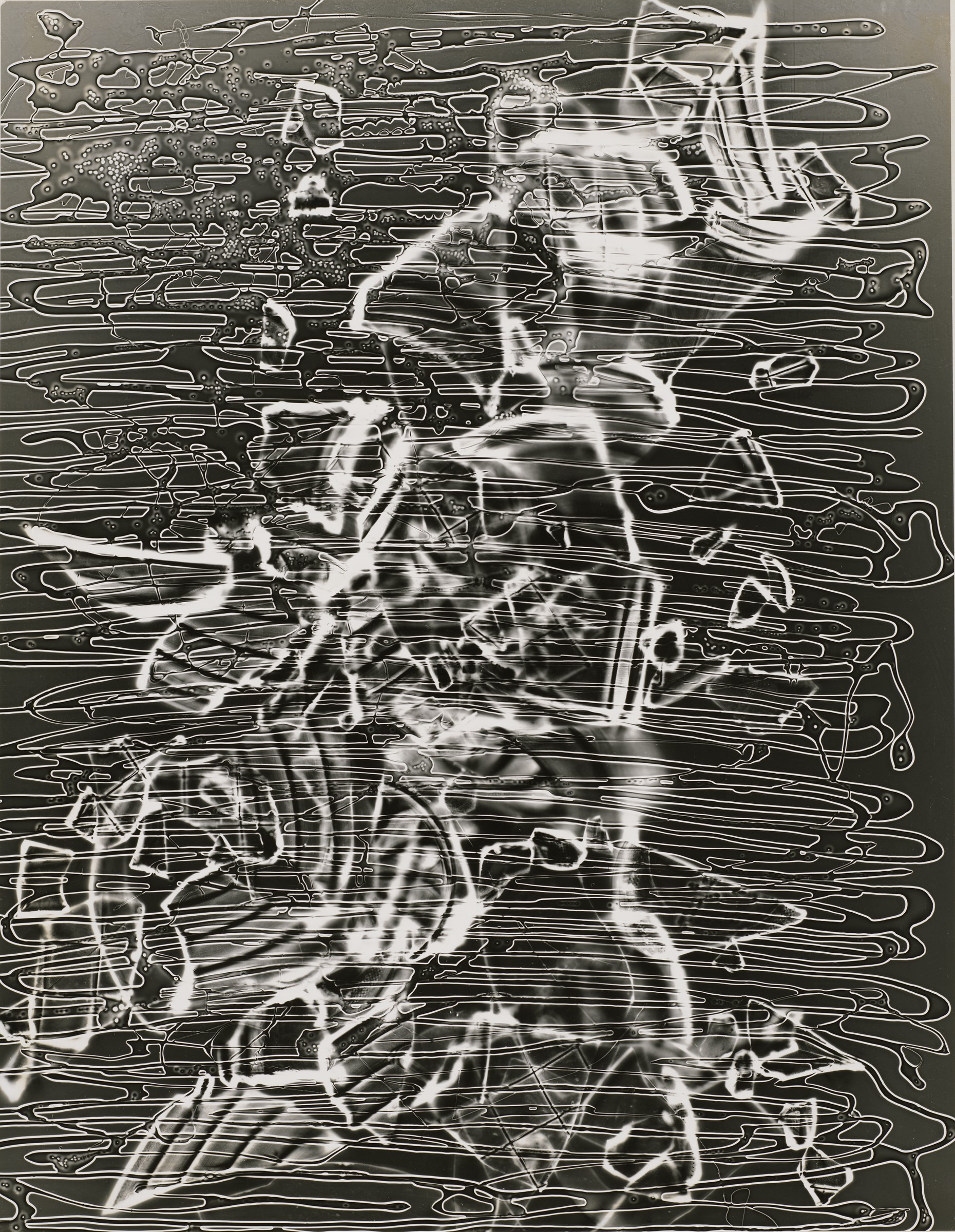
White Shadows:
The Photograms of Anneliese Hager (1904-1997)
Lynette Roth, Harvard Art Museums
1014 - space for ideas
1014 5th Avenue, New York, New York, NY, United States
Lecture by Lynette Roth Daimler Curator of the Busch-Reisinger Museum and Head of the Division of Modern and Contemporary Art at the Harvard Art Museums Moderated by Rachel Stern Executive Director of the Fritz Ascher Society in New York Anneliese Hager (1904-1997) is one of a number of modern artists who began their artistic experimentation in Germany after National Socialist cultural policy began to harden against all forms of modern art. Her preferred medium was the photogram, a photographic image made by placing an object directly on (or in close proximity to) a light-sensitive surface and exposing it to light. Hager called the reversal of light and dark in the resulting contact print “white shadows.” [...]
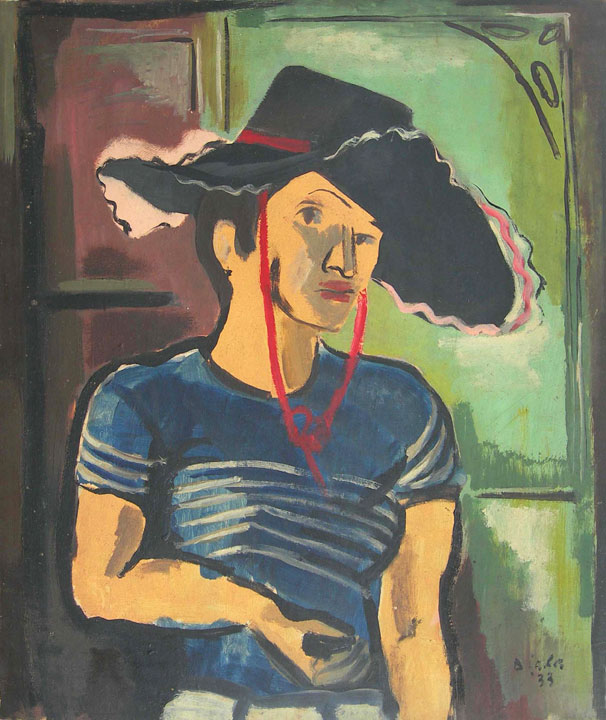
Biala (1903-2000):
The Rash Acts of Rescue and Escape
Jason Andrew, New York
1014 - space for ideas
1014 5th Avenue, New York, New York, NY, United States
WATCH THE RECORDING OF THIS EVENT HERE. More information about Janice Biala is available HERE. Lecture featuring Jason Andrew Independent Scholar, Curator and Producer in New York Introduced by Rachel Stern Executive Director of the Fritz Ascher Society in New York Biala (1903-2000) was a Polish born American painter whose career stretched over eight decades and spanned two continents. Through it all, she retained an intimacy in her art rooted in Old World Europe—sensibilities that began with memories of her childhood in a Polish village, shaped by School of Paris painters like Bonnard, Matisse and Braque, inspired by Velázquez and the Spanish Masters, and broadened by the community of loft-living artists in Post World War II Downtown New York. Her [...]

Live From
Museum of Jewish Heritage
Carolyn Enger’s
Mischlinge Exposé
1014 - space for ideas
1014 5th Avenue, New York, New York, NY, United States
Join the Museum of Jewish Heritage — A Living Memorial to the Holocaust, the German Consulate General in New York, and the Fritz Ascher Society for Persecuted, Ostracized, and Banned Art for a stirring performance of Enger’s Mischlinge Exposé, Live from Edmond J. Safra Hall™. The performance will be followed by a discussion between Enger and Rachel Stern, Founding Director and CEO of the Fritz Ascher Society. Carolyn Enger is a pianist based in the greater New York City area, with roots reaching back to Breslau, now Wroclaw, Poland. Her Mischlinge Exposé brings to light the stories of Mischlinge—a derogatory term used by the Nazis to describe people with both Jewish and Aryan ancestry—like her [...]
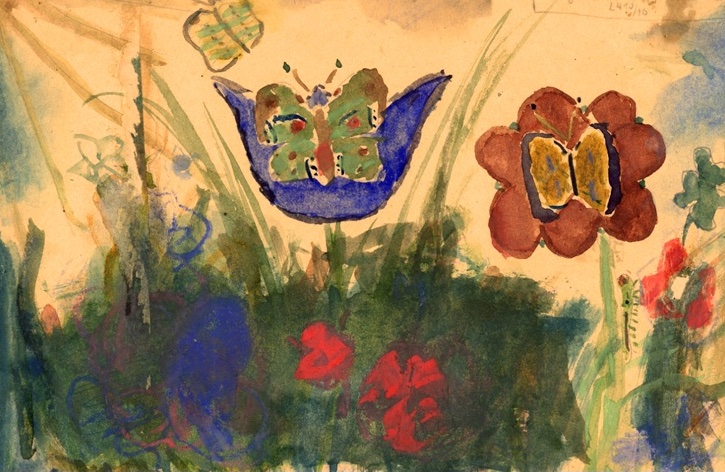
Between Art and Record Keeping –
Artistic Representations of the Holocaust
Ori Z Soltes, Washington DC
1014 - space for ideas
1014 5th Avenue, New York, New York, NY, United States
WATCH THE RECORDING OF THIS EVENT HERE. Visual art during and after the Holocaust, by victims and survivors eloquently contradicts the famous comment by Theodor Adorno that "after the Holocaust to make art is barbaric." On the contrary, it was and is necessary: as part of the record of events as they were transpiring, and as part of the human response to horror--to express anger, to raise questions, to offer healing--in the time after those events. Who creates the art and what kind of art is created? What role does it play in wrestling with the question of what God is and what we humans are? These issues have implications both from within the heart of the Holocaust and from well beyond its particular boundaries. [...]
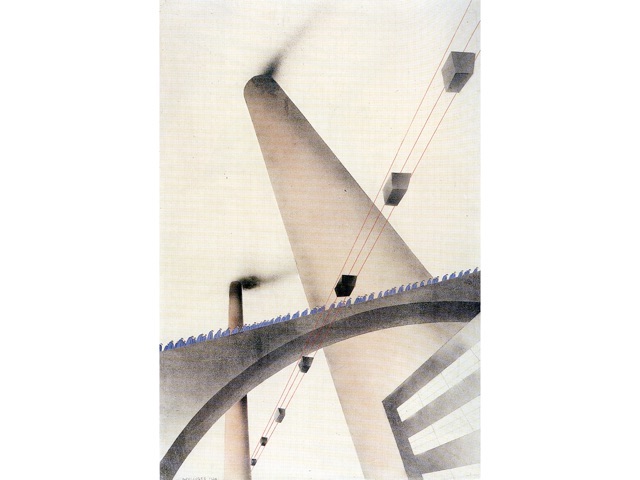
Excluded and yet entangled in two dictatorships:
The political constructivist Oskar Nerlinger
Eckhart Gillen, Berlin
1014 - space for ideas
1014 5th Avenue, New York, New York, NY, United States
Oskar Nerlinger (1893-1969) was one of the most important artists of the committed art scene in the Weimar Republic. He was a member of the Association of Proletarian Revolutionary Art (ASSO for short), which was founded in 1928 and belonged to the KPD, which cooperated with the Soviet avant-garde artist group Oktober. At that time there was no conflict between positions of aesthetic modernism and KPD politics. In 1932 the political and artistic avant-garde in the Soviet Union fell apart, with serious consequences for left-wing artists in Germany. Almost at the same time, the Nazi system broke with all forms of modernity. With his idea of art suddenly doubly isolated within his own party, which followed Stalin's art verdict, [...]
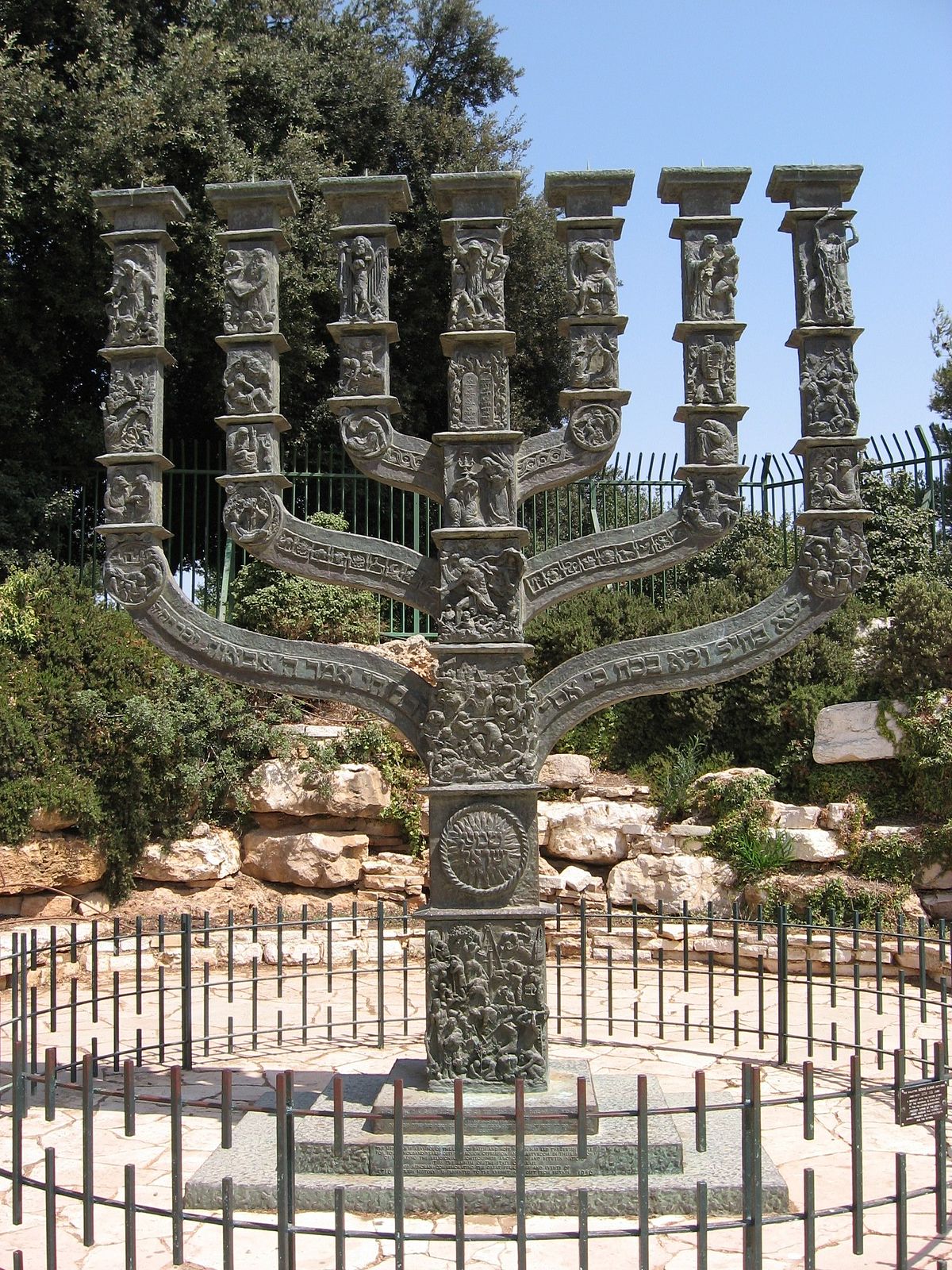
Becoming Jewish:
The Sculptor Benno Elkan (1877-1960)
Christian Walda, Dortmund with
Wolfgang Weick and Ori Z. Soltes
1014 - space for ideas
1014 5th Avenue, New York, New York, NY, United States
Born 1877 in Dortmund, the sculptor Benno Elkan (1877-1960) first studied painting in Munich and Karlsruhe. At the end of his studies, he turned to sculpture. As a young artist, he spent time in Paris, Rome, and Frankfurt. Elkan’s oeuvre was largely made up of commissions. In the beginning, he mainly created tombs. Medals, portrait busts of well-known personalities, monuments to victims and candelabras follow, partly for the religious (Jewish and Christian) context. Elkan fled persecution by the German Nazi regime to Great Britain in 1934and lived with his family in London until the end of his life. Perhaps the most important work besides the Menorah in Jerusalem (1956) was never built: Memorial to the Defenseless Victims of the Bombing [...]

Building the Largest Digital Memorial
to the Victims of Nazism:
The Arolsen Archives
with Floriane Azoulay and Giora Zwilling, Arolsen
1014 - space for ideas
1014 5th Avenue, New York, New York, NY, United States
The International Tracing Service (ITS), since 2019 called Arolsen Archives, was established by the Allies in 1948 as a central search and information center. They house the world’s most extensive collection of documents about the victims of National Socialist persecution, including documents from Nazi concentration camps, ghettoes and penal institutions, documents about forced laborers, and documents from the early post-war period about Displaced Persons, mainly Holocaust survivors, former concentration camp prisoners, and forced laborers. People who had fled the sphere of influence of the Soviet Union for political reasons are also included. The archive's holdings consist of 30 million documents in total and belong to UNESCO’s Memory of the World. At this event, Floriane Azoulay (Director) and Giora Zwilling (Deputy [...]


